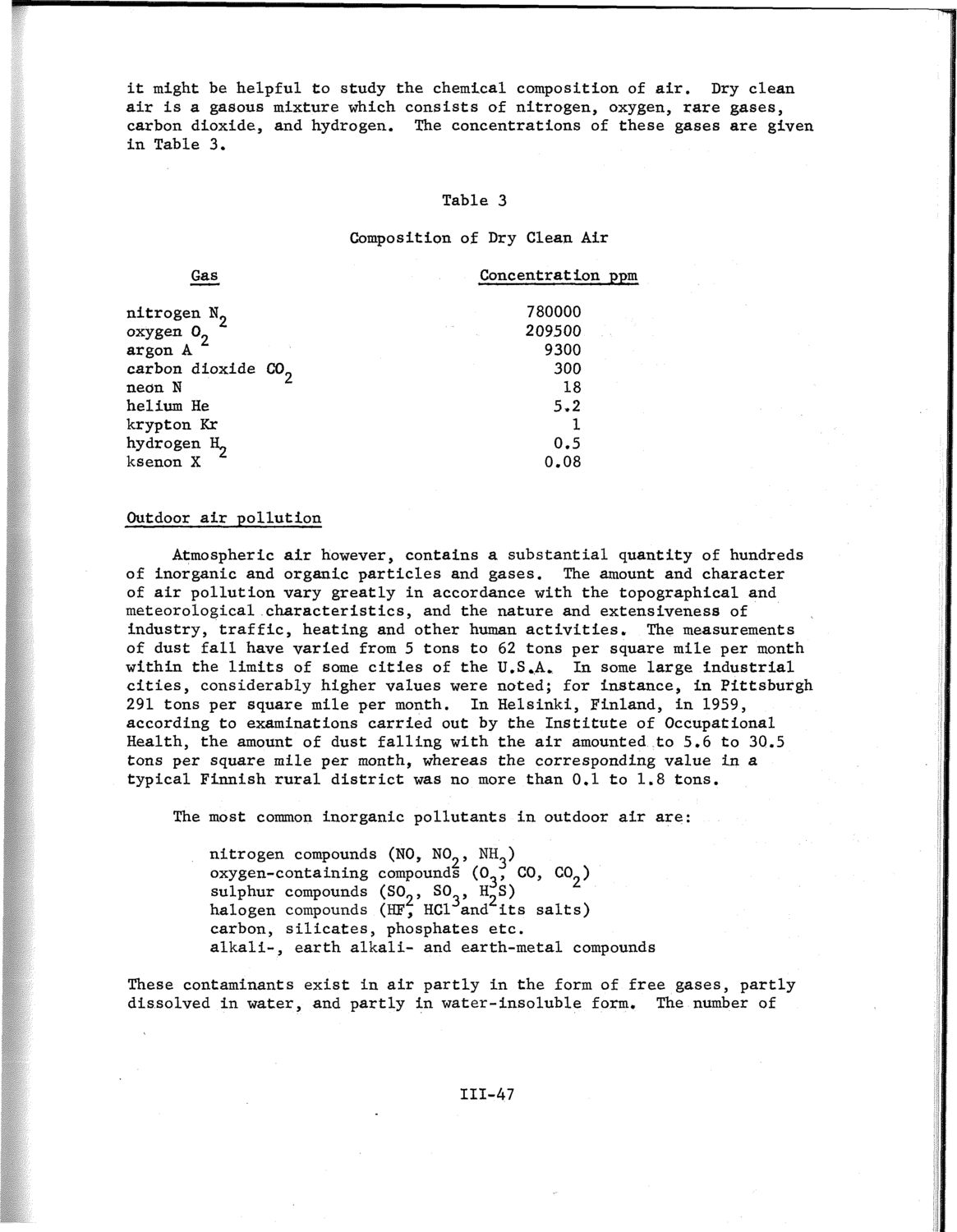| |
| |
Caption: SWE - Proceedings of the First International Conference of Women Engineers and Scientists
This is a reduced-resolution page image for fast online browsing.

EXTRACTED TEXT FROM PAGE:
it might be helpful to study the chemical composition of air. Dry clean air is a gasous mixture which consists of nitrogen, oxygen, rare gases, carbon dioxide, and hydrogen. The concentrations of these gases are given in Table 3. Table 3 Composition of Dry Clean Air Gas nitrogen N„ oxygen 0 2 argon A carbon dioxide C0„ neon N helium He krypton Kr hydrogen YL ksenon X Outdoor air pollution Atmospheric air however, contains a substantial quantity of hundreds of inorganic and organic particles and gases. The amount and character of air pollution vary greatly in accordance with the topographical and meteorological characteristics, and the nature and extensiveness of industry, traffic, heating and other human activities. The measurements of dust fall have varied from 5 tons to 62 tons per square mile per month within the limits of some cities of the U.S.A. In some large industrial cities, considerably higher values were noted; for instance, in Pittsburgh 291 tons per square mile per month. In Helsinki, Finland, in 1959, according to examinations carried out by the Institute of Occupational Health, the amount of dust falling with the air amounted to 5.6 to 30.5 tons per square mile per month, whereas the corresponding value in a typical Finnish rural district was no more than 0,1 to 1.8 tons. The most common inorganic pollutants in outdoor air are: nitrogen compounds (NO, NO , NH ) oxygen-containing compounds (0_, CO, CO ) sulphur compounds (S0„, SO , H S) halogen compounds (HF, HC1 and Its salts) carbon, silicates, phosphates etc. alkali-, earth alkali- and earth-metal compounds These contaminants exist In air partly in the form of free gases, partly dissolved in water, and partly in water-insoluble form. The number of Concentration ppm 780000 209500 9300 300 18 5.2 1 0.5 0.08 111-47
| |